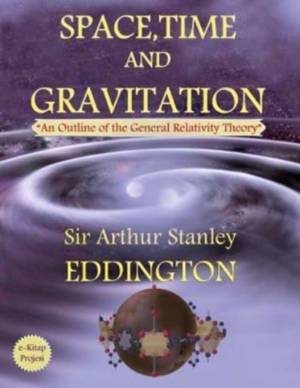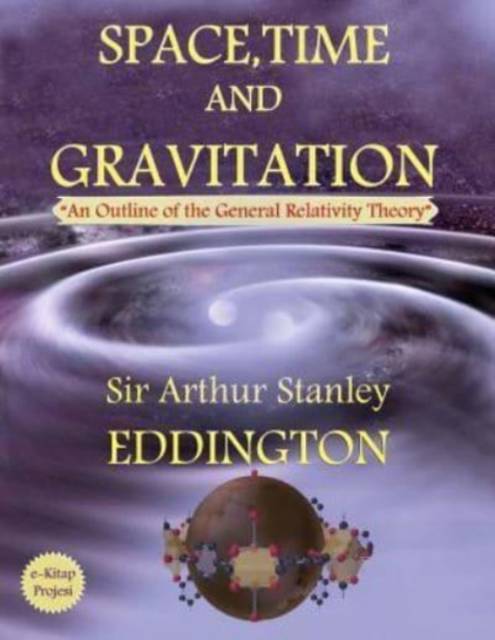
En raison d'une grêve chez bpost, votre commande pourrait être retardée. Vous avez besoin d’un livre rapidement ? Nos magasins vous accueillent à bras ouverts !
- Retrait gratuit dans votre magasin Club
- 7.000.000 titres dans notre catalogue
- Payer en toute sécurité
- Toujours un magasin près de chez vous
En raison de la grêve chez bpost, votre commande pourrait être retardée. Vous avez besoin d’un livre rapidement ? Nos magasins vous accueillent à bras ouverts !
- Retrait gratuit dans votre magasin Club
- 7.000.0000 titres dans notre catalogue
- Payer en toute sécurité
- Toujours un magasin près de chez vous
Space, Time and Gravitation
An Outline of the General Relativity Theory
Arthur Stanley Eddington
Livre broché | Anglais
16,95 €
+ 33 points
Format
Description
Einstein has succeeded in separating far more completely than hitherto the share of the observer and the share of external nature in the things we see happen. The perception of an object by an observer depends on his own situation and circumstances; for example, distance will make it appear smaller and dimmer. We make allowance for this almost unconsciously in interpreting what we see. But it now appears that the allowance made for the motion of the observer has hitherto been too crudea fact overlooked because in practice all observers share nearly the same motion, that of the earth. Physical space and time are found to be closely bound up with this motion of the observer; and only an amorphous combination of the two is left inherent in the external world. When space and time are relegated to their proper sourcethe observerthe world of nature which remains appears strangely unfamiliar; but it is in reality simplified, and the underlying unity of the principal phenomena is now clearly revealed.The deductions from this new outlook have, with one doubtful exception, been confirmed when tested by experiment. It is my aim to give an account of this work without introducing anything very technical in the way of mathematics, physics, or philosophy. The new view of space and time, so opposed to our habits of thought, must in any case demand unusual mental exercise. The results appear strange; and the incongruity is not without a humorous side. For the first nine chapters the task is one of interpreting a clear-cut theory, accepted in all its essentials by a large and growing school of physicistsalthough perhaps not everyone would accept the author's views of its meaning.Chapters x and xi deal with very recent advances, with regard to which opinion is more uid. As for the last chapter, containing the author's speculations on the meaning of nature, since it touches on the rudiments of a philosophical system, it is perhaps too sanguine to hope that it can ever be other than controversial.A non-mathematical presentation has necessary limitations; and the reader who wishes to learn how certain exact results follow from Einstein's, or even Newton's, law of gravitation is bound to seek the reasons in a mathematical treatise. But this limitation of range is perhaps less serious than the limitation of intrinsic truth. There is a relativity of truth, as there is a relativity of space." For is and is-not though with Rule and LineAnd up-and-down without, I could define."Alas! It is not so simple. We abstract from the phenomena that which is peculiar to the position and motion of the observer; but can we abstract that which is peculiar to the limited imagination of the human brain? We think we can, but only in the symbolism of mathematics. As the language of a poet rings with a truth that eludes the clumsy explanations of his commentators, so the geometry of relativity..But the mind is not content to leave scientific Truth in a dry husk of mathematical symbols, and demands that it shall be alloyed with familiar images. The mathematician, who handles x so lightly, may fairly be asked to state, not indeed the inscrutable meaning of x in nature, but the meaning which x conveys to him.Although primarily designed for readers without technical knowledge of the subject, it is hoped that the book may also appeal to those who have gone into the subject more deeply. A few notes have been added in the Appendix mainly to bridge the gap between this and more mathematical treatises, and to indicate the points of contact between the argument in the text and the parallel analytical investigation. It is impossible adequately to express my debt to contemporary literature and discussion. The writings of Einstein, Minkowski, Hilbert, Lorentz, Weyl, Robb, and others, have provided the groundwork; in the give and take of debate with friends and correspondents, the extensive ramifications have gradually appeared.
Spécifications
Parties prenantes
- Auteur(s) :
- Editeur:
Contenu
- Nombre de pages :
- 210
- Langue:
- Anglais
Caractéristiques
- EAN:
- 9781505496451
- Date de parution :
- 11-12-14
- Format:
- Livre broché
- Format numérique:
- Trade paperback (VS)
- Dimensions :
- 216 mm x 279 mm
- Poids :
- 499 g

Les avis
Nous publions uniquement les avis qui respectent les conditions requises. Consultez nos conditions pour les avis.






